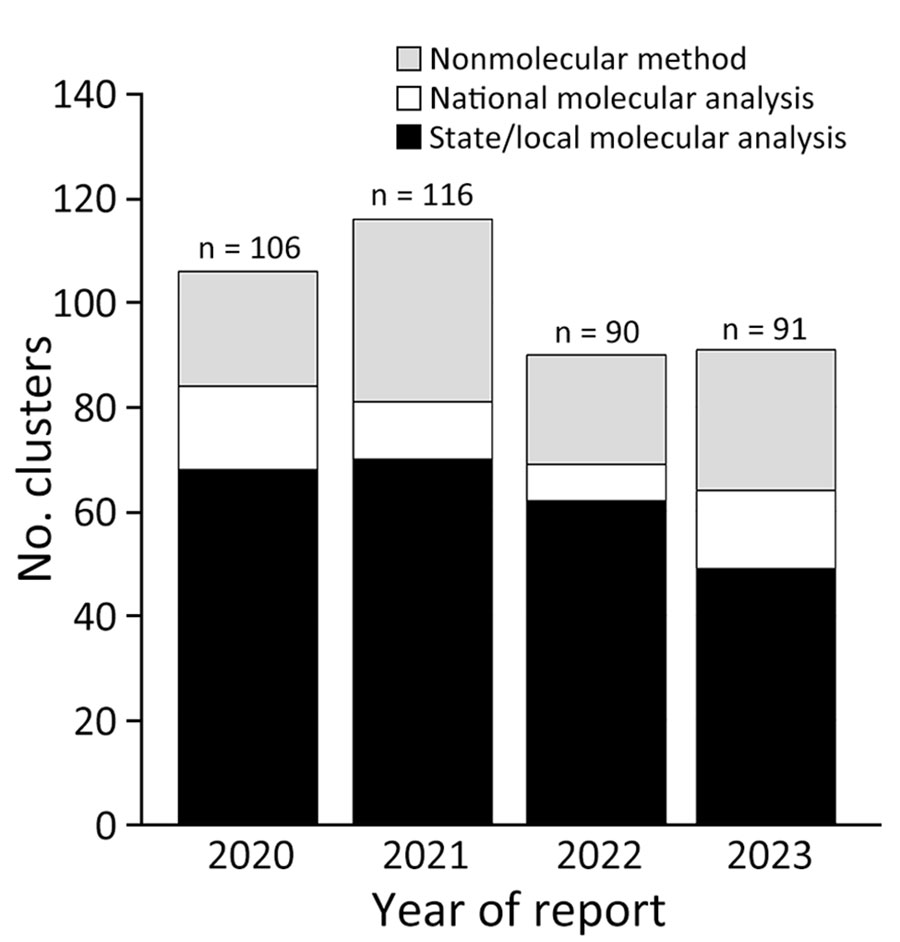Volume 31, Supplement—May 2025
SUPPLEMENT ISSUE
Supplement
Nationwide Implementation of HIV Molecular Cluster Detection by Centers for Disease Control and Prevention and State and Local Health Departments, United States
Figure 2

Figure 2. Clusters of HIV newly reported to the Centers for Disease Control and Prevention by state and local health departments, United States, during 2020–2023. Clusters were reported to Centers for Disease Control and Prevention through cluster report forms. Methods by which clusters were first detected are indicated; nonmolecular cluster detection methods include time-space cluster detection, partner services, and provider notification. Numbers on top of bars indicate exact number of HIV clusters reported each year.
1These first authors contributed equally to this article.
Page created: April 08, 2025
Page updated: May 12, 2025
Page reviewed: May 12, 2025
The conclusions, findings, and opinions expressed by authors contributing to this journal do not necessarily reflect the official position of the U.S. Department of Health and Human Services, the Public Health Service, the Centers for Disease Control and Prevention, or the authors' affiliated institutions. Use of trade names is for identification only and does not imply endorsement by any of the groups named above.